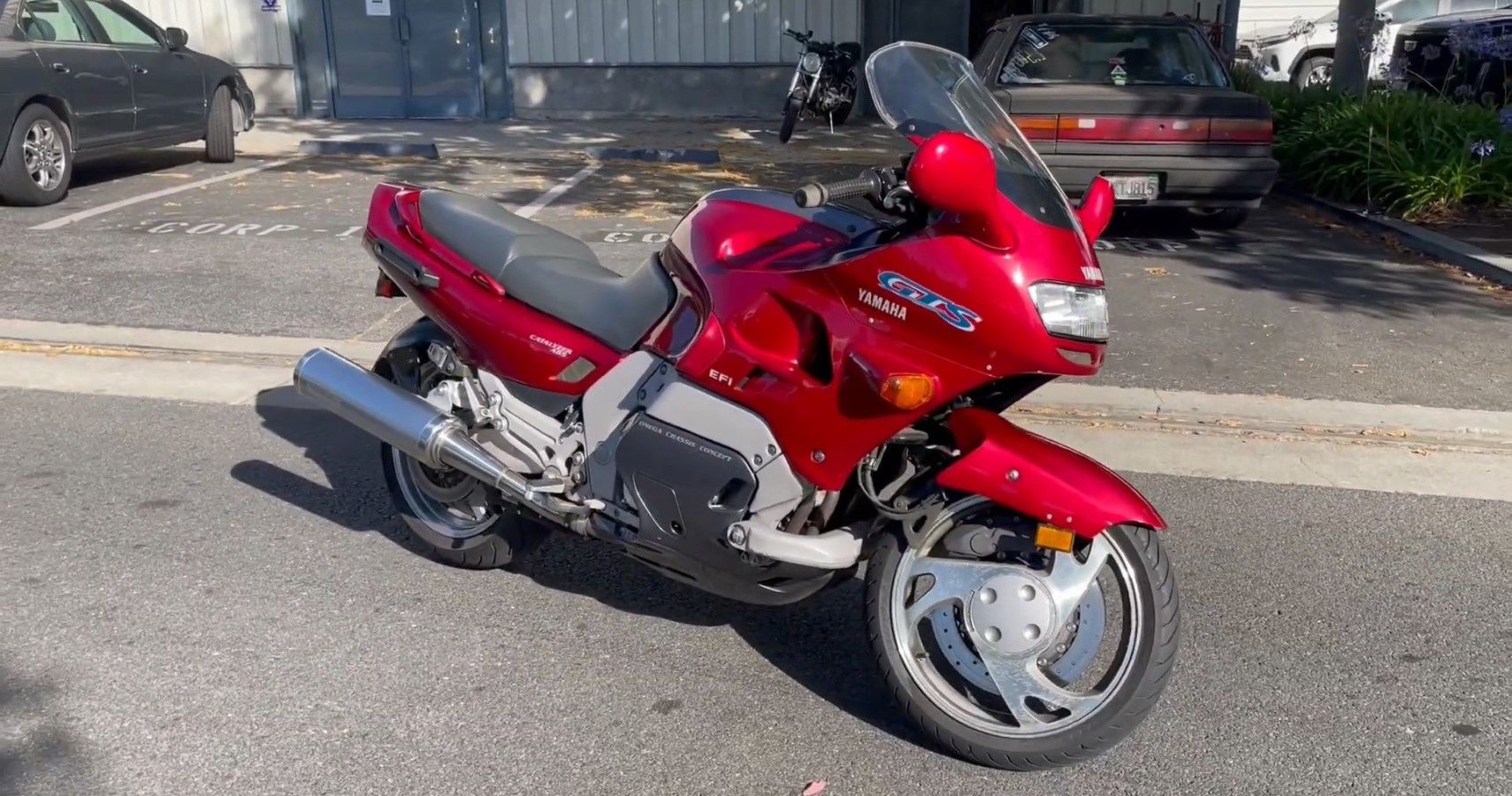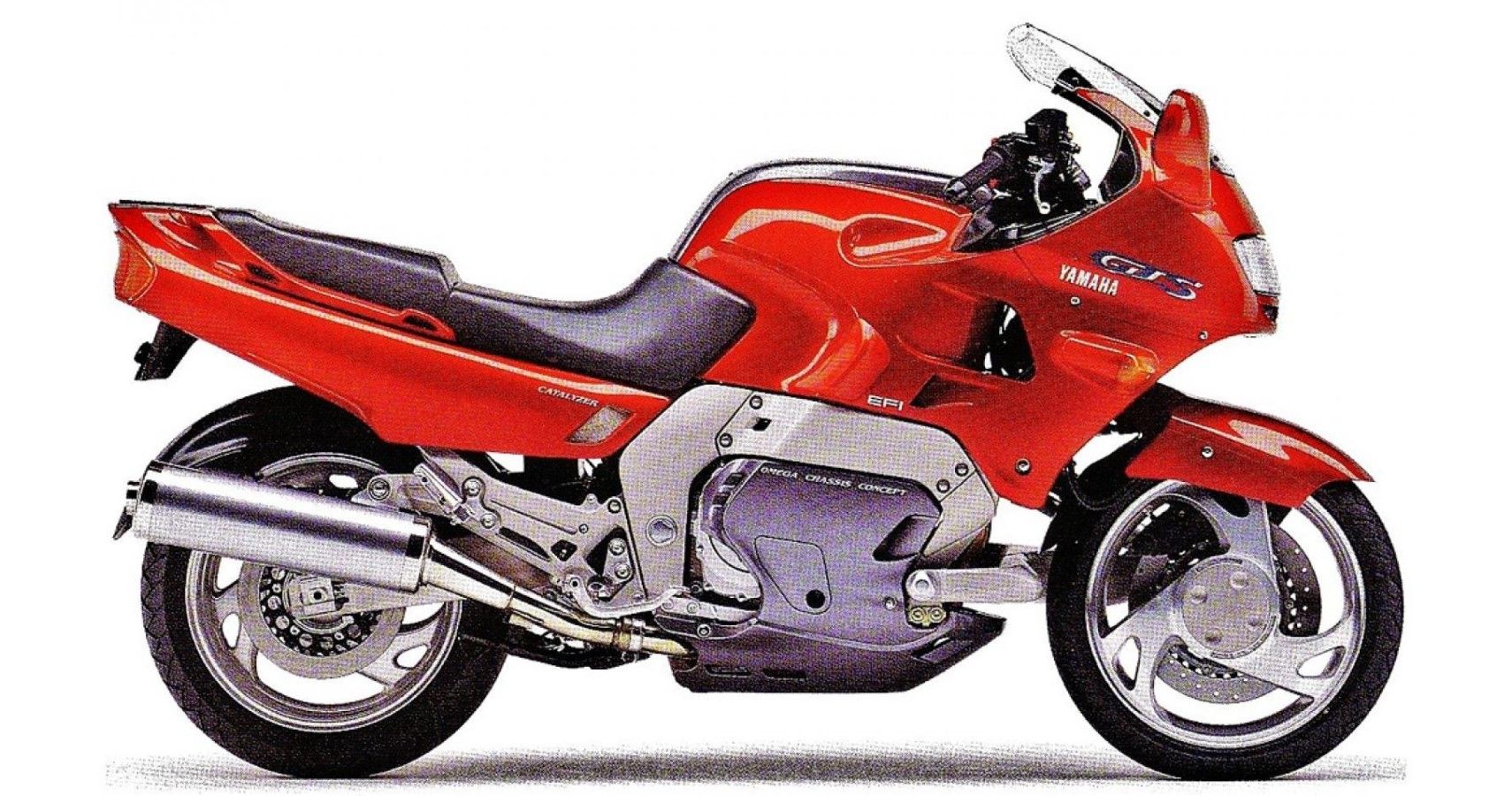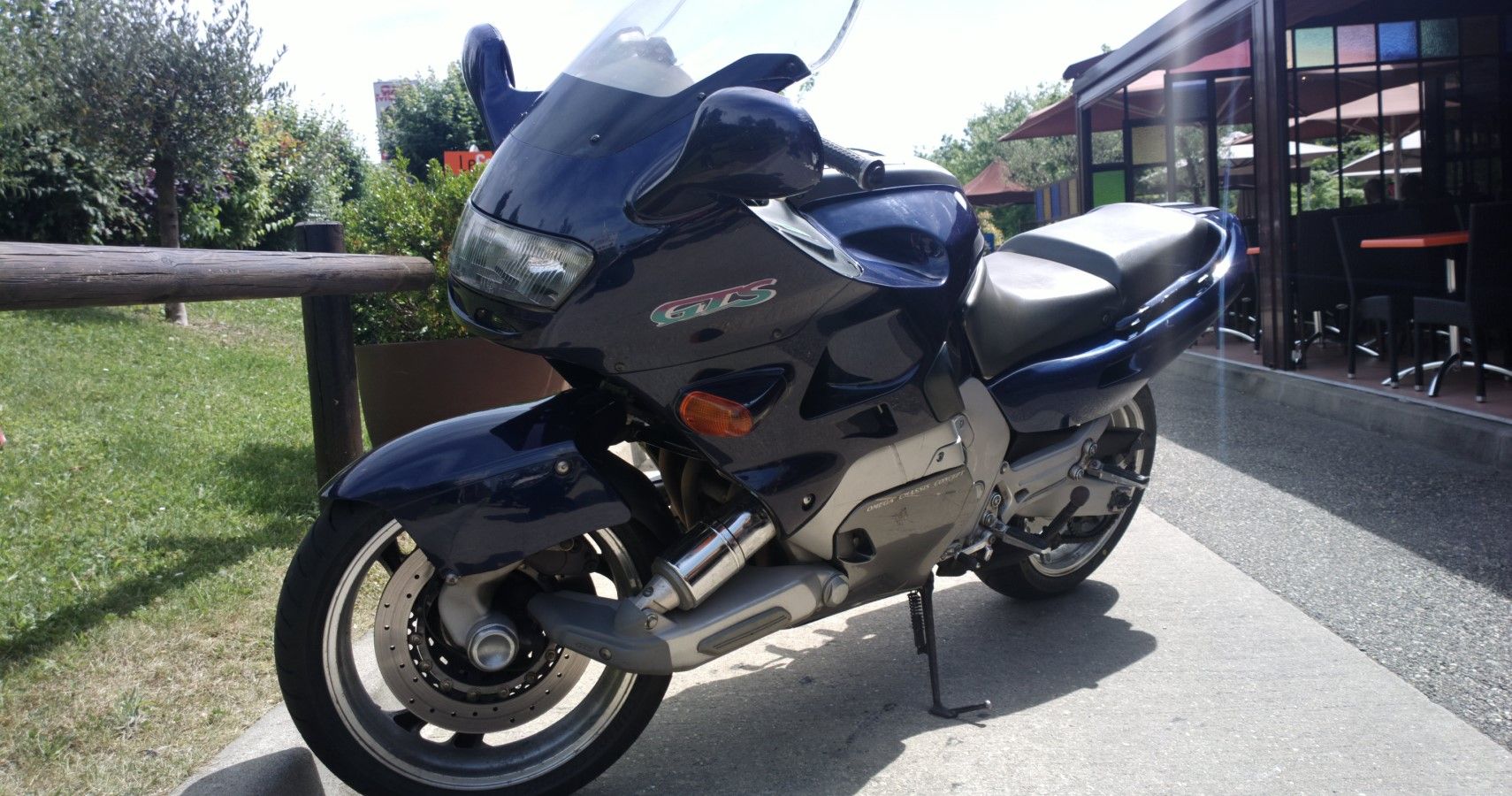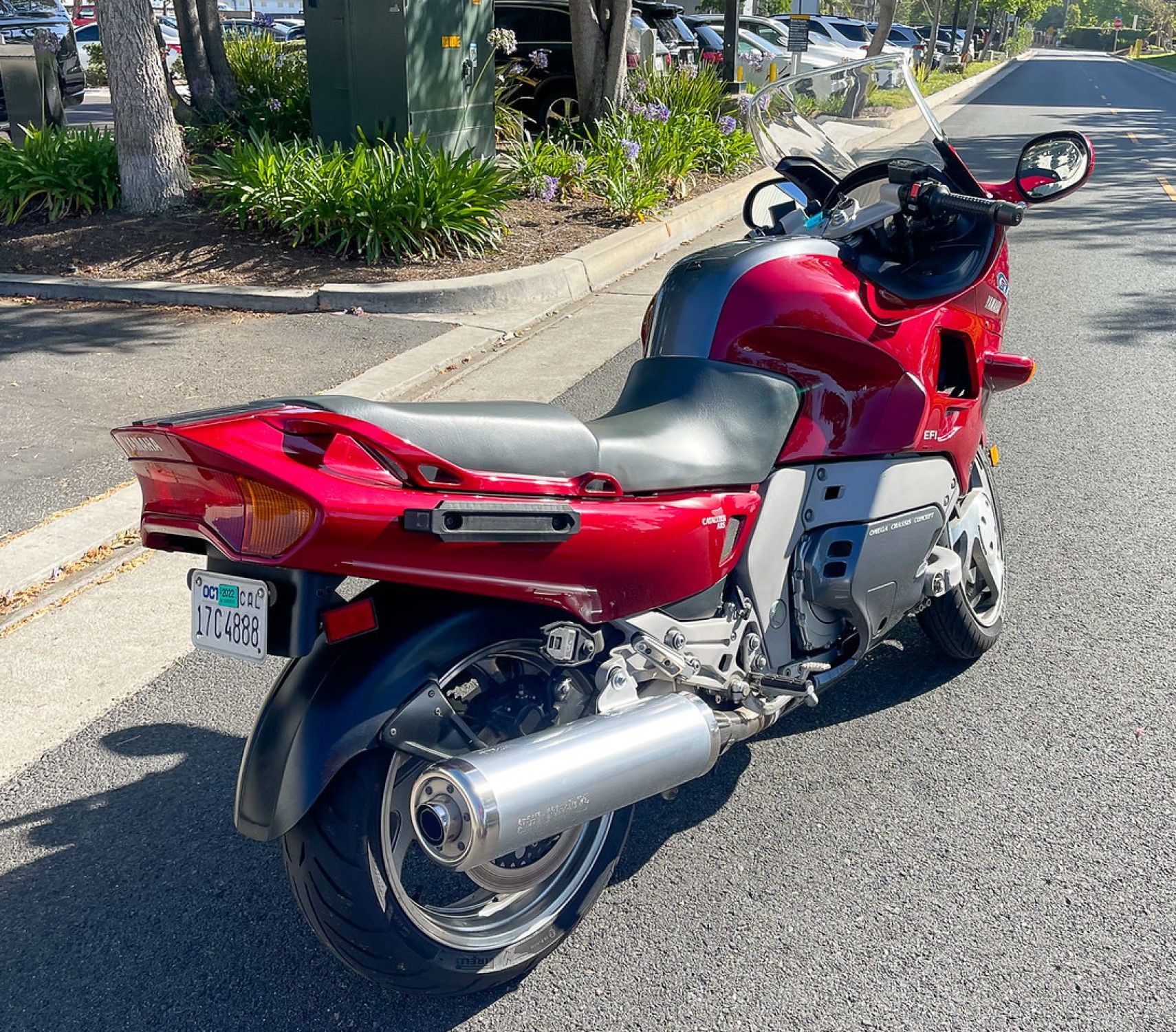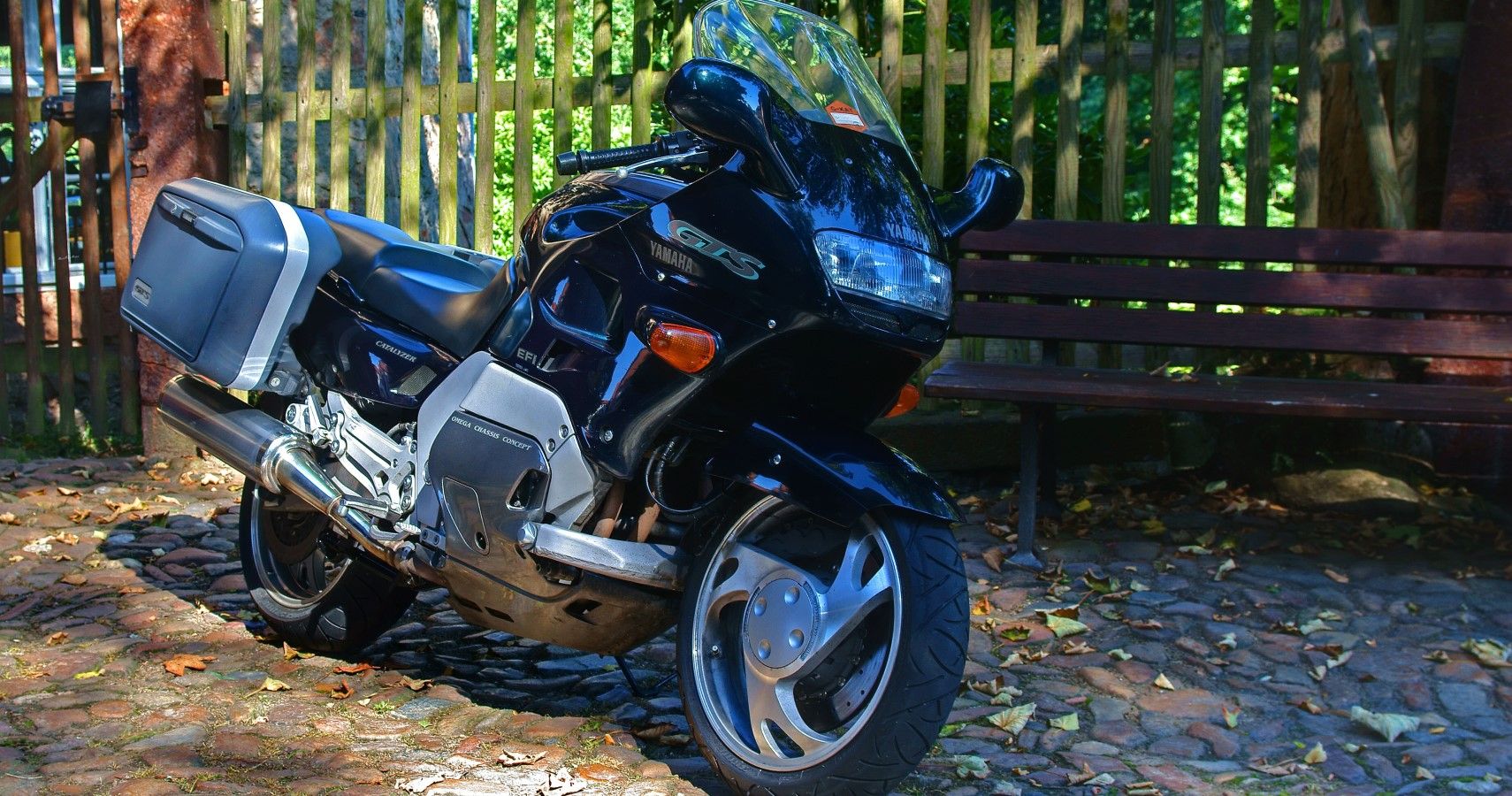Automakers now play it safe in terms of technology implementation. But things were wild back in the 80s and 90s and there were all kinds of futuristic features plonked onto motorcycles. One such creation was the Yamaha GTS1000, one of the first motorcycles to come equipped with a forkless front end. The "first" tag actually goes to the Ducati-based Bimota Tesi 1/D 851 which one-upped Yamaha by launching in 1990. But it was the GTS1000 that took this technology across the world.
The complex front suspension and steering system had a lot of perks including more precise handling and reduced stress on the main frame. But it was not without issues and often put forth a "different" riding experience. At slow speeds, the steering was hard to move and there was the issue of changing steering rake angle and length with the intensity of braking.
Also, a first-time technology feature also came with a hefty price tag. The Yamaha GTS1000, when launched, was priced at a chunky $12,999. With today's money, you can get the devilish MV Agusta Brutale 800 Rosso for $400 more! Back in the day, this Yamaha locked horns with the likes of BMW K1100RS, Honda CBR1000F, Suzuki Katana 1100, and the Kawasaki ZX-11.
The Yamaha GTS1000 with its futuristic features made jaws drop back in the 90s; Still does in 2022!
Yamaha GTS1000 Had The Iconic Forkless 'RADD' Front End
The coolest feature of the Yamaha GTS1000 is its forkless front suspension setup. Yamaha derived it from Rationally Advanced Design Development (RADD) which was the creation of American inventor James parker. The front suspension and steering system on the GTS1000 was similar to that seen in cars. The wheel and suspension duties were mainly handled by an upper and lower arm as seen in cars. A shock absorber was fixed onto the left side of the wheel.
An upright was fixed onto the wheels on the left but is concealed away by the fender. The front wheel is fixed onto a chunky axle that uses roller bearings for movement. Ball joints were used to connect the upper and lower arms on both ends of the upright which allows the movement of the wheel on all axis. The steering system consisted of a steering box that connected the handlebars to the front.
The advantages of this system were numerous. Because of the low-slung design, the center of gravity was much lower than a conventional setup which helped in cornering and stability. Then, as the forkless system was directly connected to the frame, it eliminated the multiplying of load from contact. As the suspension arms were much more stable, there was a reduction in steering mass and the handling was a lot more precise.
The GTS1000 Had A Unique Frame With A Greek Connection
The handlebars are connected to the upright on top of the wheels via a steering box. This whole setup is connected to a uniquely designed frame that forms two C-shaped aluminum plates with a slight inclination to the front. When viewed from the side, the main frame looks like the Greek alphabet Ω; hence the name Omega Chassis. The main frame is connected to two steel subframes at either end. The front extension is for the fairing and dashboard and the rear is for the seat and bodywork.
Yamaha GTS1000 Packed A 100 Hp FZR1000-Derived Inline-Four
Yamaha gave the GTS1000 a detuned version of the inline-four engine from the FZR1000. This 1,002cc double-overhead-cam 20-valve liquid-cooled unit churned out 100 hp and 78 lb-ft of torque. Power was sent to the rear wheel via a five-speed gearbox. Yamaha showcased it as both a tourer and a sportbike which was kind of confusing.
The seating posture was a bit aggressive with the handlebar placed lower. This demanded a slightly forward-biased stance. But the engine peaked out at about 6,500 rpm which wasn't tallying along with the "sportsbike" tag that Yamaha wanted to bestow on it. Nevertheless, the GTS1000 was a cozy machine to ride and came with a haul-ready saddle for both the rider and the passenger.
This Futuristic Yamaha Flaunted Cool Design And Features
The GTS1000 still looks futuristic by 2022 standards. Those three-spoke alloy wheels look sick! The motorcycle was low and long which was yet again, an indication of its touring side. The fixed windscreen was ample to guard you against windblast. It was only offered in a metallic red shade for the US.
Yamaha used a 5/17-inch rear wheel that came attached with an 11-1-inch brake rotor coupled to a twin-piston caliper. The rear section was quite normal as compared to the front. It came with a conventional swingarm with a mono-shock taken from the Yamaha FZR1000. The front brake situation was quite tricky as Yamaha couldn't deploy a dual-disc setup due to space constraints.
Instead, the GTS1000 got a chunky 12.6-inch ventilated disc coupled to a six-piston caliper to the 3.5/17-inch alloy wheel. The ones sold in North America came with standard ABS. Another interesting aspect was the position of its fuel tank. The GTS1000 packed a 5.3-gallon tank in an upright position above the gearbox and towards the rear of the main "Omega" frame.
The Yamaha GTS1000 Is An Awesome Modern Classic
Yamaha took a bold step with the GTS1000 and created the first worldwide production-ready motorcycle with a forkless front end. But this complex creation couldn't gain traction as intended by Yamaha. It sold for just seven years and there are only a few on the roads right now. But there is a thriving community of GTS1000 owners who still share the same pride and passion for this oddity. And this Yamaha clearly has the making of a modern classic.
Source: Yamaha

